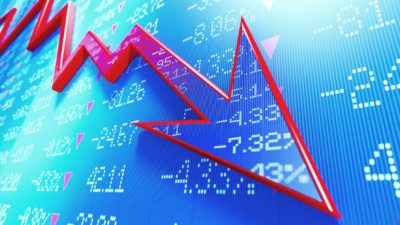This article was originally published on Fool.com. All figures quoted in US dollars unless otherwise stated.
The two primary ways to make money from stocks are selling them for more than you paid and dividends. The first one is straightforward, but the role dividends can play in an investor's total returns is often underrated. Dividends, paid out quarterly from a company's profits, are a way for companies to reward shareholders for simply holding onto their shares.
A well-rounded portfolio shouldn't only have dividend stocks, but it should have its fair share. When done correctly, dividends can provide thousands in monthly retirement income. Let me show you how.
Spread out some of the risks
There are exchange-traded funds (ETFs) that pay out dividends simply as a byproduct of some of the companies within it paying dividends. And then, there are ETFs that focus specifically on dividend-paying stocks that have to meet specific qualifications. If you're looking to invest in dividend stocks, focusing on dividend-paying ETFs can help you accomplish multiple things at once: dividends, diversification, and less risk.
Let's take a look at the ProShares S&P 500 Dividend Aristocrats ETF (NYSEMKT: NOBL) as an example. To be eligible, a company must be in the S&P 500 and be a Dividend Aristocrat, which is a company that has increased its yearly dividend for at least 25 consecutive years. What's better is that most of the companies within the fund have done so for at least 40 years.
The fund contains 65 companies spanning all major sectors, and the top 10 holdings only make up 17.66% of the fund (for perspective, the top 10 holdings in the S&P 500 make up just over 27%).
Let time do the heavy lifting
You have to accumulate a sizable stake in dividend stocks to get to the point where you're receiving thousands in monthly dividend income. For most investors who don't have large lump sums to invest at once, this means taking advantage of compound earnings. In investing, compound earnings occur when the money you make from investments starts to make money on itself.
Since its inception, the ProShares S&P 500 Dividend Aristocrats ETF has returned just over 10% annually. By no means do past results guarantee future performance, but if we assume this continues over the long term, here's roughly how much an investor could have in 25 years at different monthly investment amounts:
| Monthly Investment | Average Annual Returns | Amount in 25 Years |
|---|---|---|
| $1,000 | 10% | $1.18 million |
| $1,500 | 10% | $1.77 million |
| $2,000 | 10% | $2.36 million |
Data source: Author calculations.
With time and consistency, accumulating a significant stake in dividend stocks is attainable. A great way to keep yourself consistent is by using dollar-cost averaging. With dollar-cost averaging, you put yourself on an investing schedule and stick to it regardless of stock prices at the time. It keeps you consistent and helps prevent you from trying to time the market, which is virtually impossible to do consistently long-term.
It pays to be patient
Dividends, in general, can be lucrative, but they can really be powerful when you reinvest your dividends. Many brokers, and companies, allow you to automatically reinvest the dividends you're paid back into the stock that paid it out. Doing so adds to the effects of compound earnings and can drastically add to your returns.
Let's assume a dividend-paying stock returns, on average, 7% annually with a 2% dividend yield over 25 years. Here's how the values would differ if you reinvested the dividends over that span versus taking them as cash:
| Monthly Investment | Value After 25 Years When Taking Dividends as Cash | Value After 25 Years When Reinvesting Dividends |
|---|---|---|
| $1,000 | $758,988 | $1.01 million |
| $1,500 | $1.13 million | $1.52 million |
| $2,000 | $1.51 million | $2.03 million |
Data source: Author calculations. (Assumes average annual 7% price appreciation and 2% dividend yield.)
Yes, you would've made money from the cash dividends you received over those 25 years, but it wouldn't be comparable to the hundreds of thousands more your investment would've grown by reinvesting your dividends. It's usually in your best interest to reinvest your dividends until you reach retirement and then begin accepting them as cash when the extra income will likely be more valuable.
At the above totals, a 2% dividend yield would pay roughly $20,200, $30,400, and $40,600 annually, respectively.
You'll be glad you took the steps
Retirement is expensive, and unfortunately for many people, that means Social Security by itself won't do the trick. There's no one-amount-fits-all regarding how much you'll need in retirement, but one thing's for sure: To make sure you're as financially comfortable as possible, you'll need to utilize all resources.
Dividends likely won't be the bulk of your retirement income, but they can play an important role -- use them to your advantage.
This article was originally published on Fool.com. All figures quoted in US dollars unless otherwise stated.









